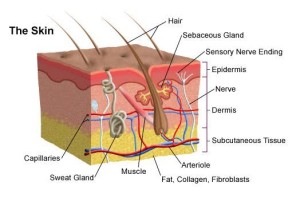What are warts?
Besides acne, warts are the most common skin-related infection.. In fact, three out of four people will develop warts at some point in their life. Warts are contagious and they can spread to other parts of the body by simply touching the wart or by shaving around the infected area of the body.
They are caused by a virus called the Human Papilloma Virus (HPV). There are over 100 different strains of HPV and some cause warts to develop on the skin. HPV is highly contagious and can be spread through direct skin to skin contact or through indirect contact such as on towels and pool sides. Warts affect the top layer of the epidermis (skin) and can affect any part of the body but are more commonly found on the hands, on the knuckles and on the fingers around the nails. You may have just one wart or a cluster of warts; usually, however, you won’t have more than 20 warts at any given time.
 It is possible that someone who is already infected with the HPV virus and has warts can re-infect themselves on different areas of their body. Warts tend to affect children, young adults and those who suffer with immunodeficiency such as those with HIV/AIDS and people receiving treatment that compromises their immune system. Warts are not usually problematic to the sufferer and can be left to improve on their own. Occasionally the sufferer can experience a problematic wart that does not improve and needs treatment.
It is possible that someone who is already infected with the HPV virus and has warts can re-infect themselves on different areas of their body. Warts tend to affect children, young adults and those who suffer with immunodeficiency such as those with HIV/AIDS and people receiving treatment that compromises their immune system. Warts are not usually problematic to the sufferer and can be left to improve on their own. Occasionally the sufferer can experience a problematic wart that does not improve and needs treatment.
In general, a wart is a hard, rough growth on the surface of the skin. Warts will vary in size and shape and can appear anywhere on the body. They are a result of an infection by certain viruses called papillomaviruses. The viruses live in cells on the surface layer of the skin and do not infect the underlying tissue. The thickened surface layer forms folds into which little blood vessels grow spontaneously, and if a wart is scratched open, the virus may spread by contact to another part of the body or to another person. There are a few different types of warts, and they are as follows:
Types of warts
Common warts (verruca vulgaris) are typically a small, raised, rough lump on the skin made up of small columns of tissue arising from the base. Common warts vary in color from normal flesh tine to dark brown-black. They usually occur on the hands, elbows, knees, and less frequently on the face or eyelids. They may also appear around the edges of the nails.
 Plantar warts (verrucae plantares) are the same as the common wart but are flattened by pressure because they appear on pressure bearing areas. They may be painful because the nodule presses into the flesh. Plantar warts can be very painful and are often found on the sole of the foot.
Plantar warts (verrucae plantares) are the same as the common wart but are flattened by pressure because they appear on pressure bearing areas. They may be painful because the nodule presses into the flesh. Plantar warts can be very painful and are often found on the sole of the foot.
Genital warts (venereal warts) are a rough skin growth that flourish in the warm and moist anal and genital regions. Like all warts, genital warts are also caused by certain strands of HPV and may be spread via sexual contact. Although venereal warts may be harmless, they may be a signal for the presence of other sexually transmitted diseases.
Flat warts are very common in children as well as men. Women are not as prone as kids and adult men but they too can develop flat warts. An otherwise harmless condition, flat warts are certainly not desirable because they can change one’s appearance if the warts develop on the face. Flat warts are the least troublesome of all the conditions in the wart family and they may often subside by themselves.





 1 Bottle
1 Bottle
 Buy 2 Get 1 Free
Buy 2 Get 1 Free Buy 3 Get 2 Free
Buy 3 Get 2 Free